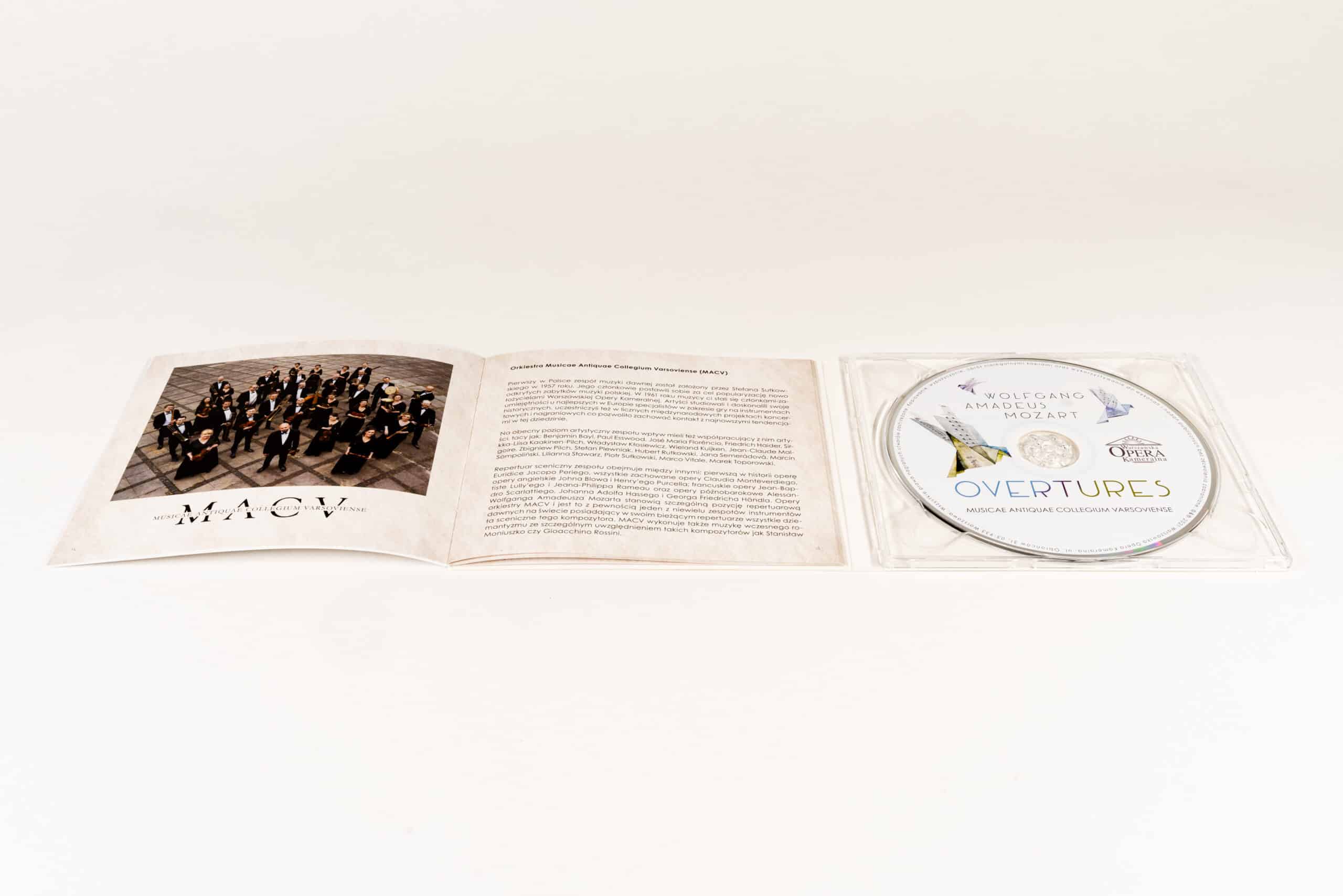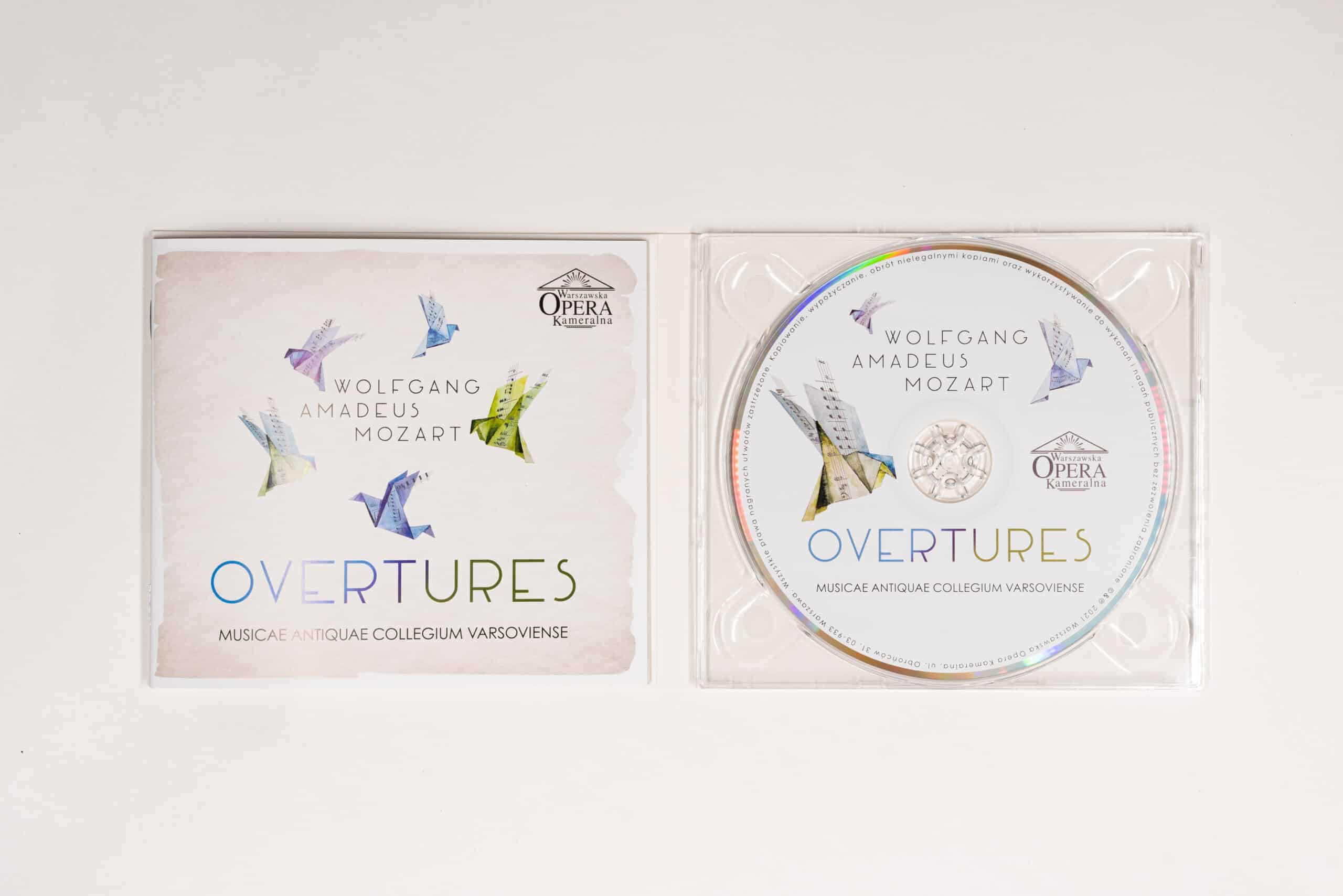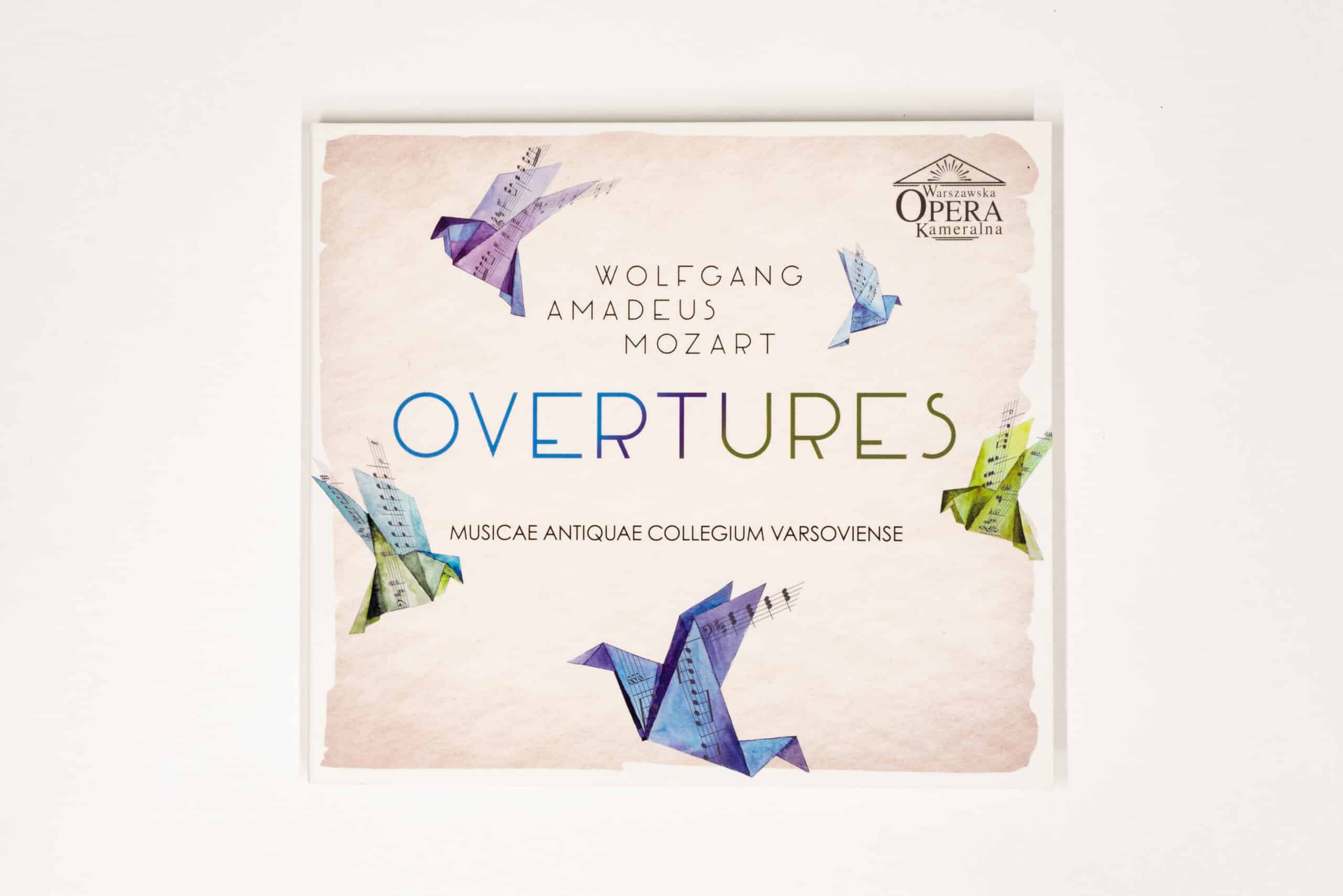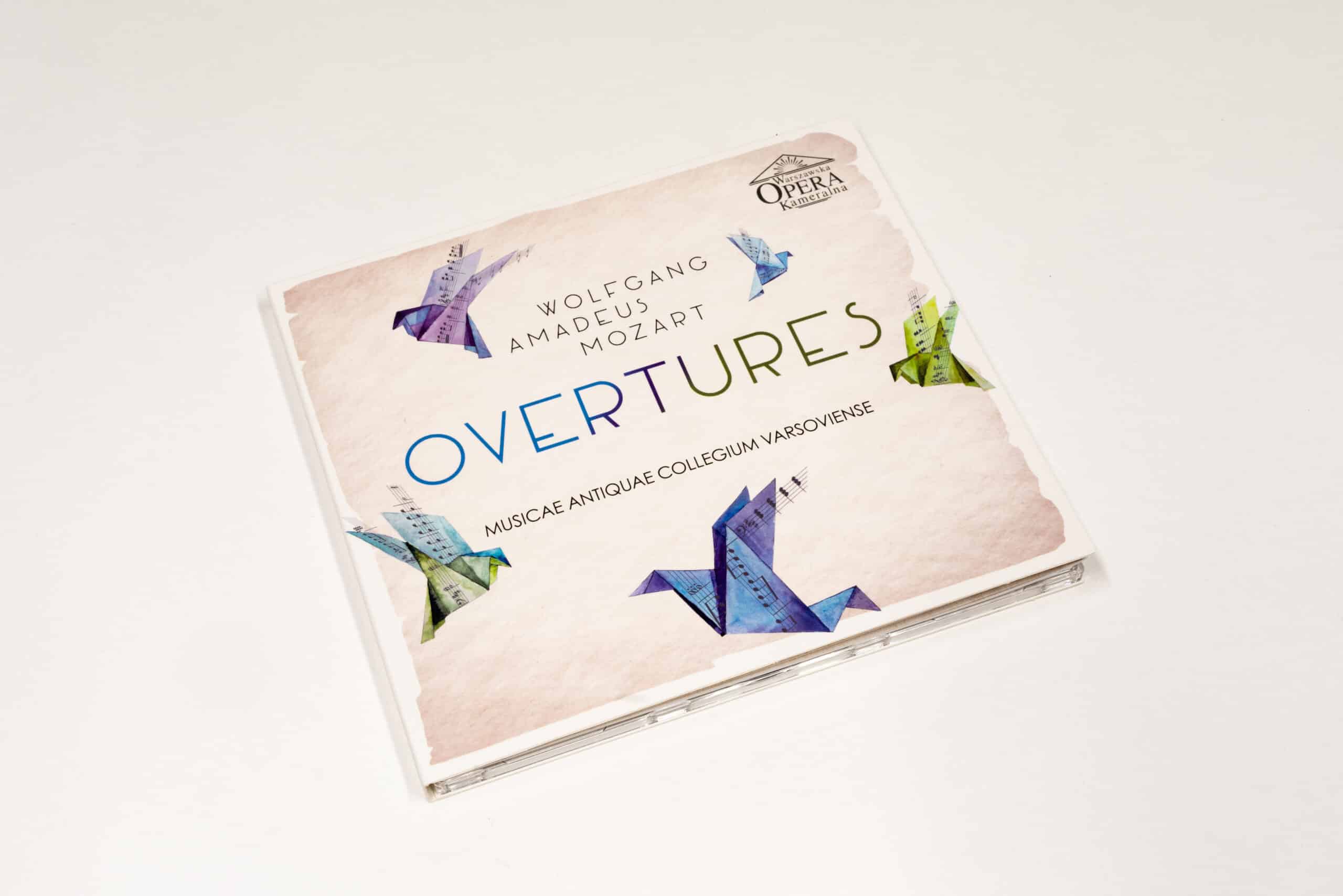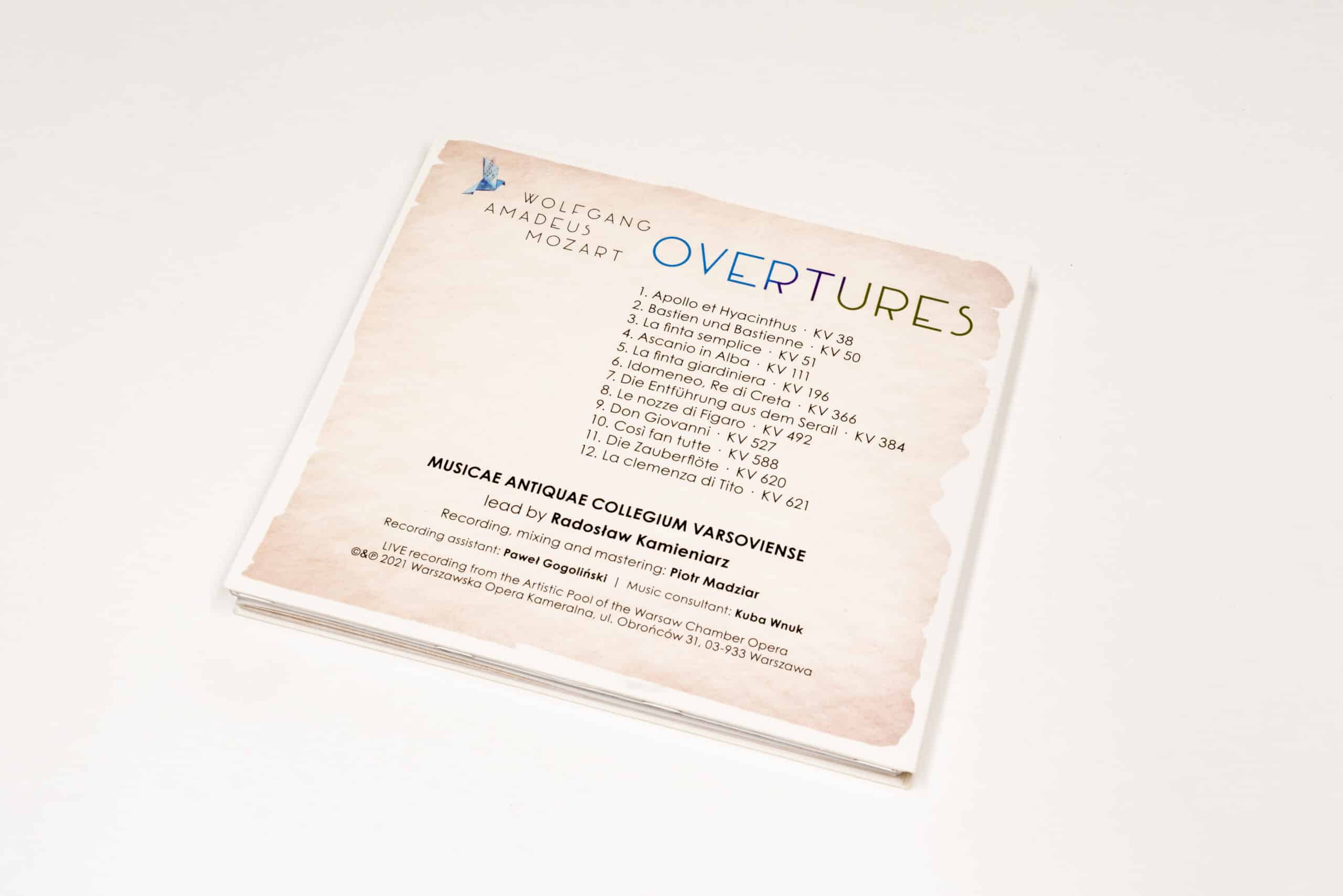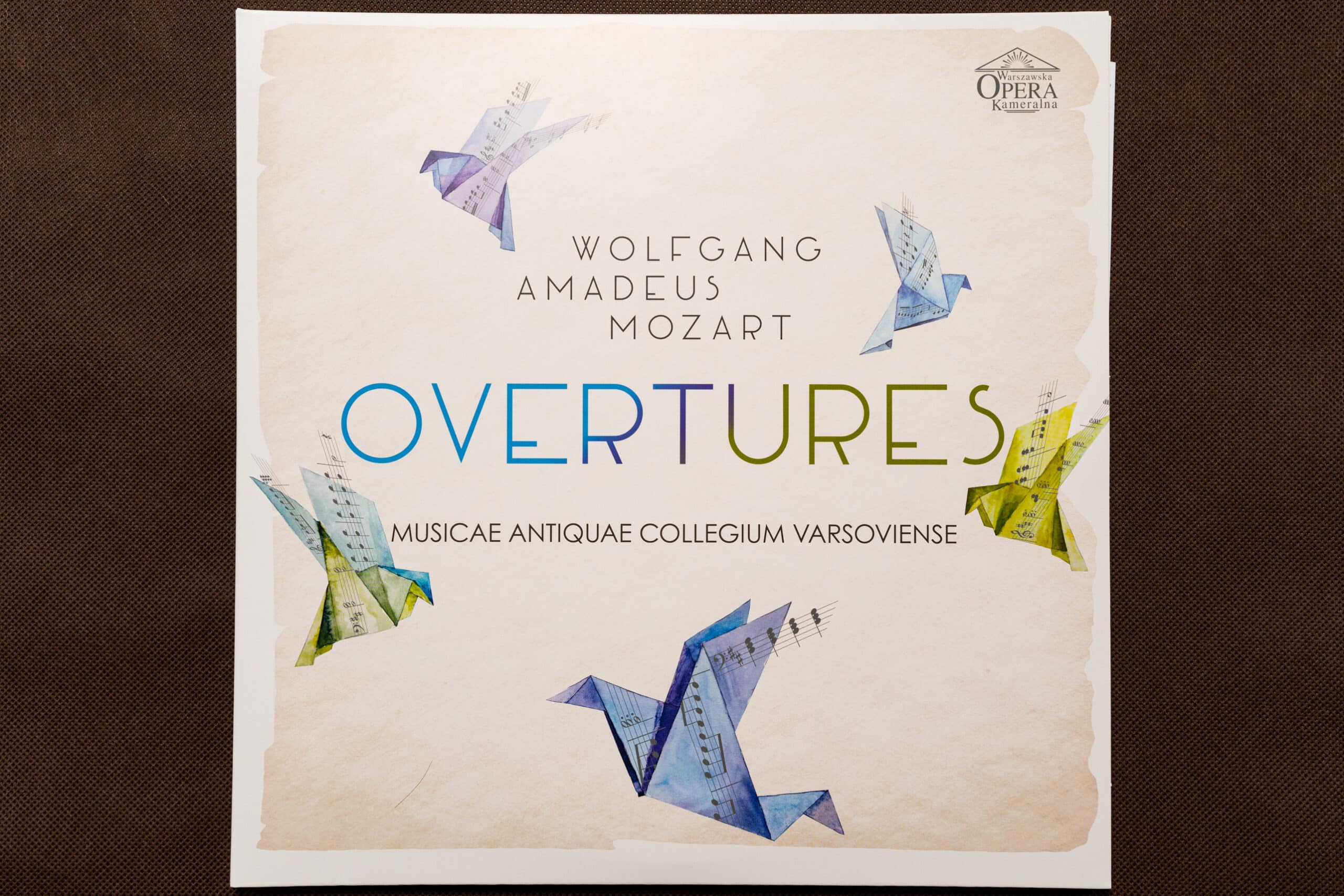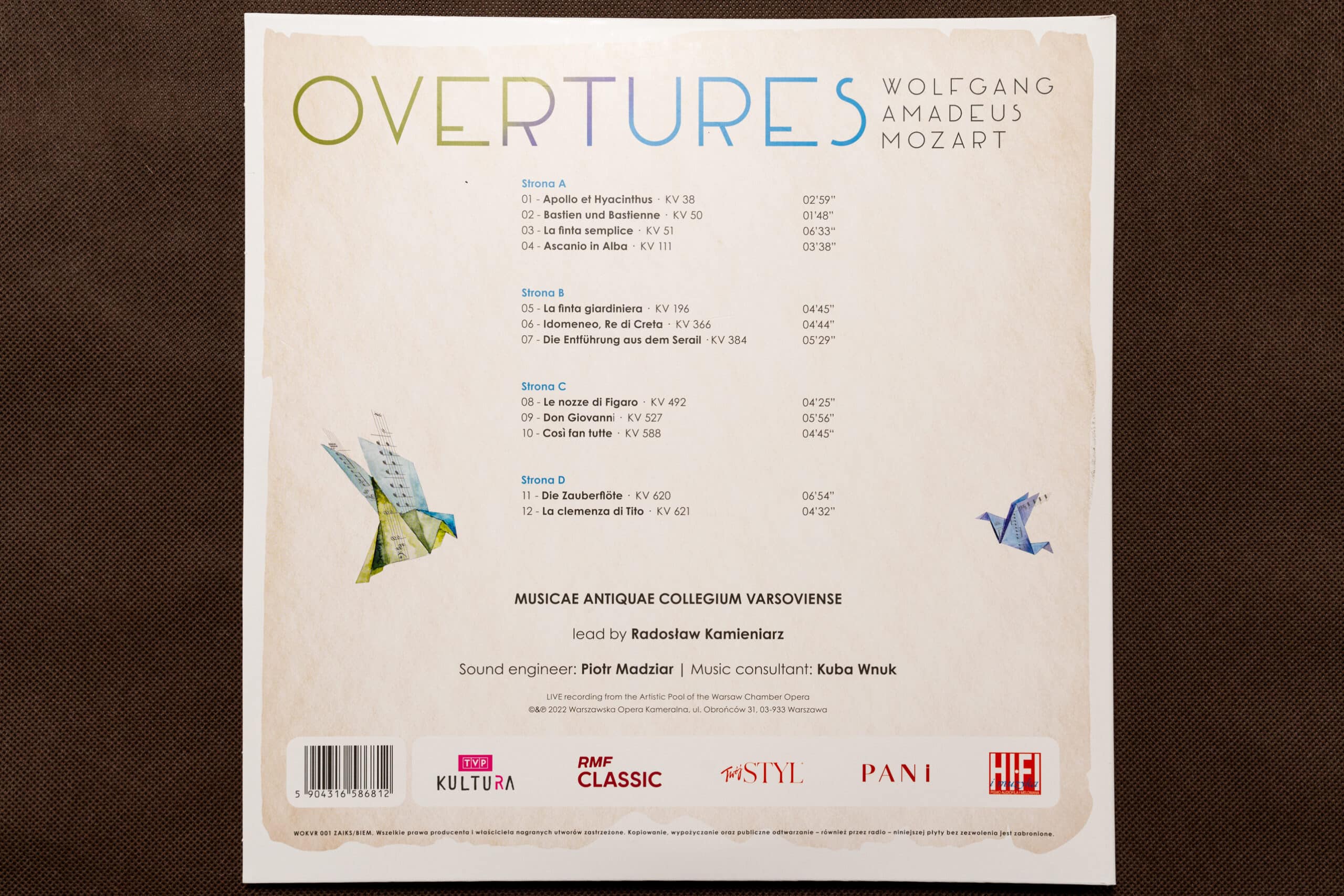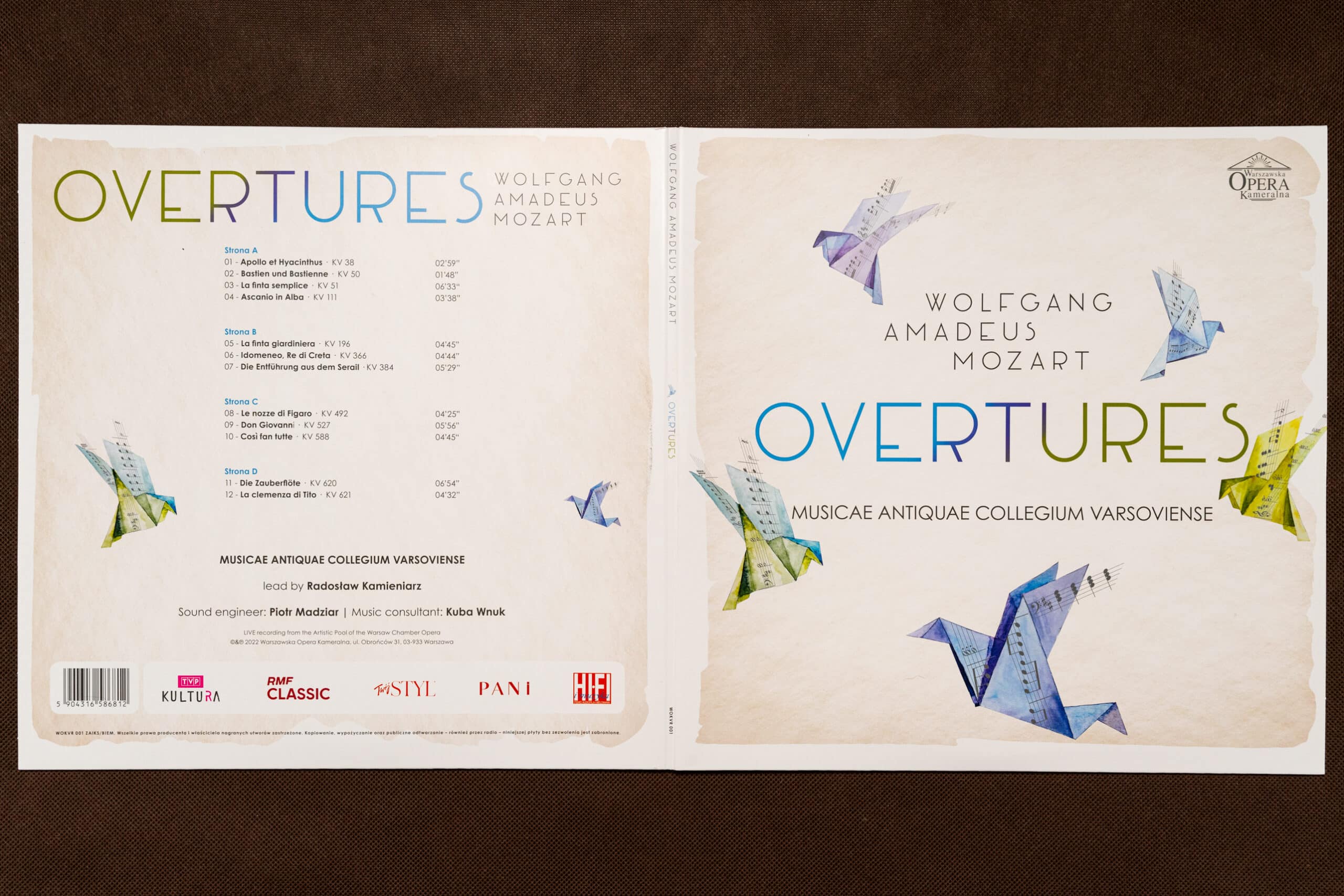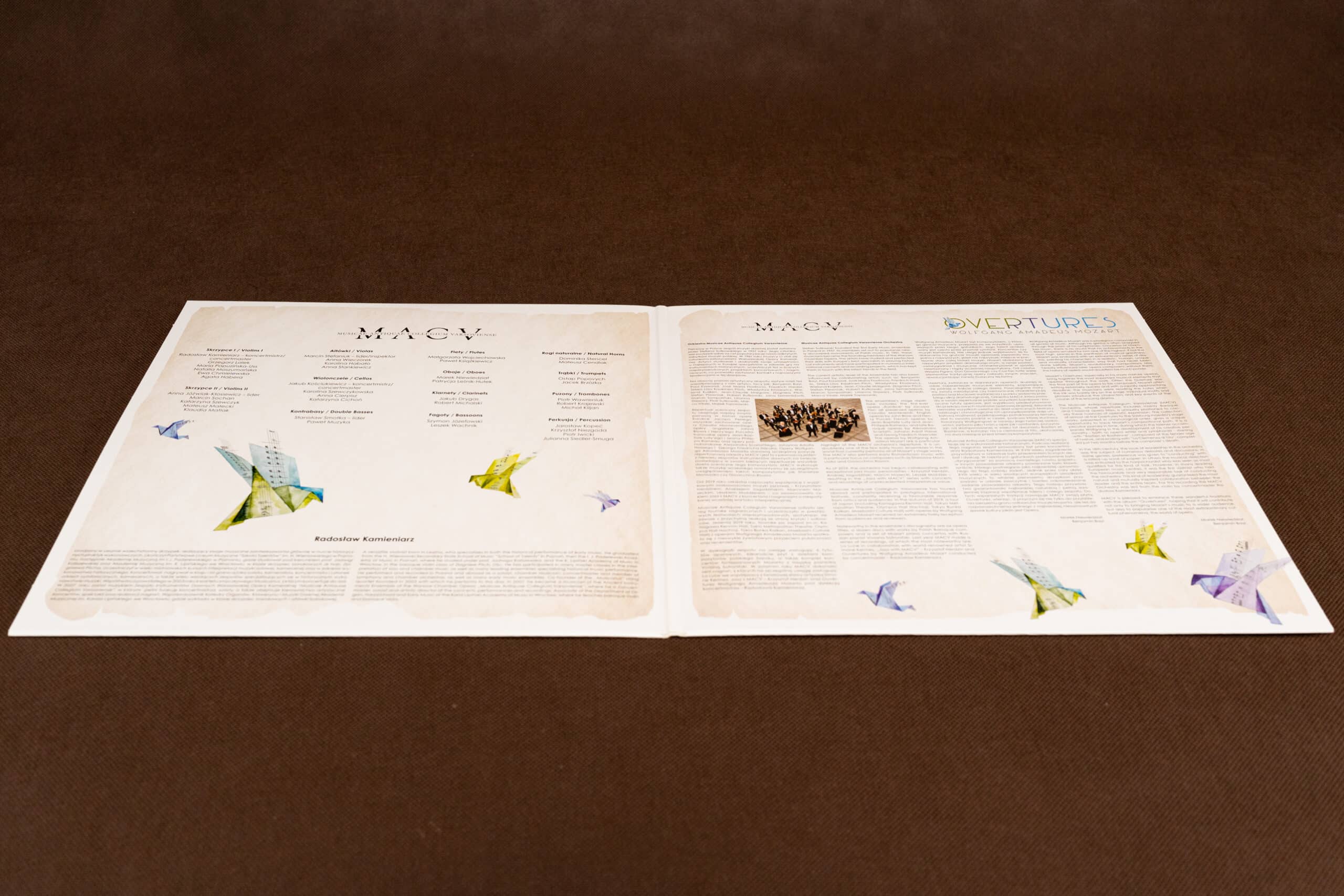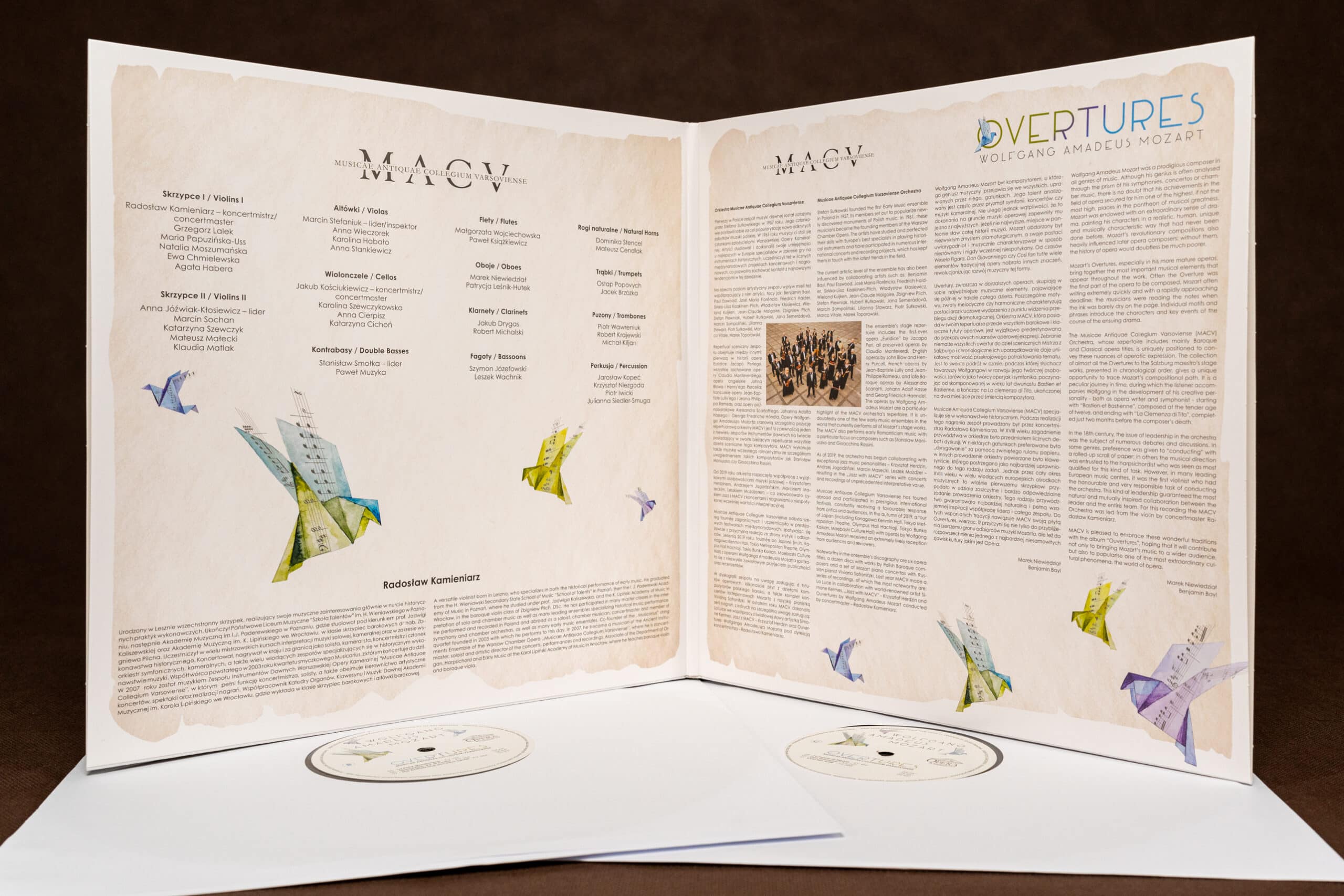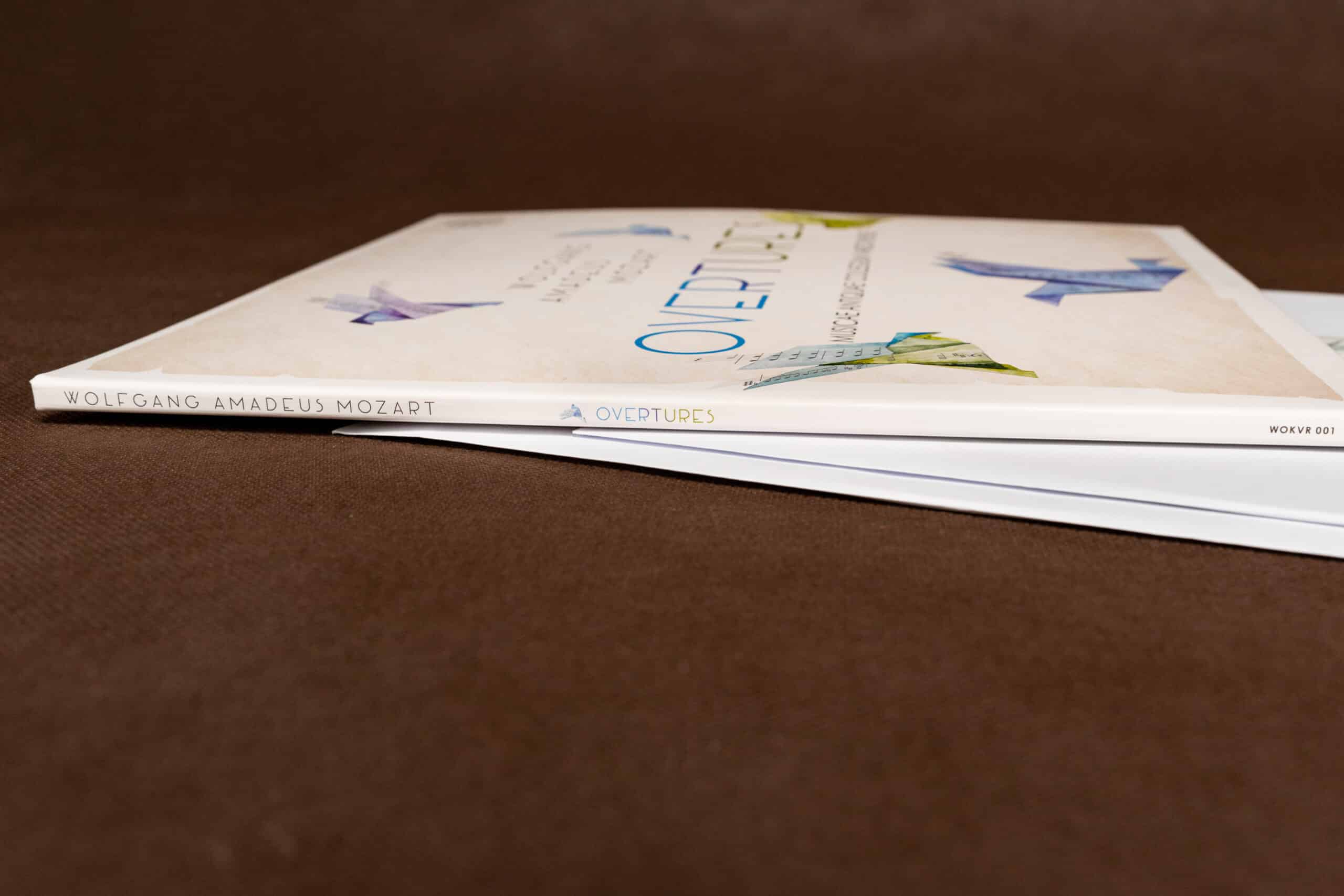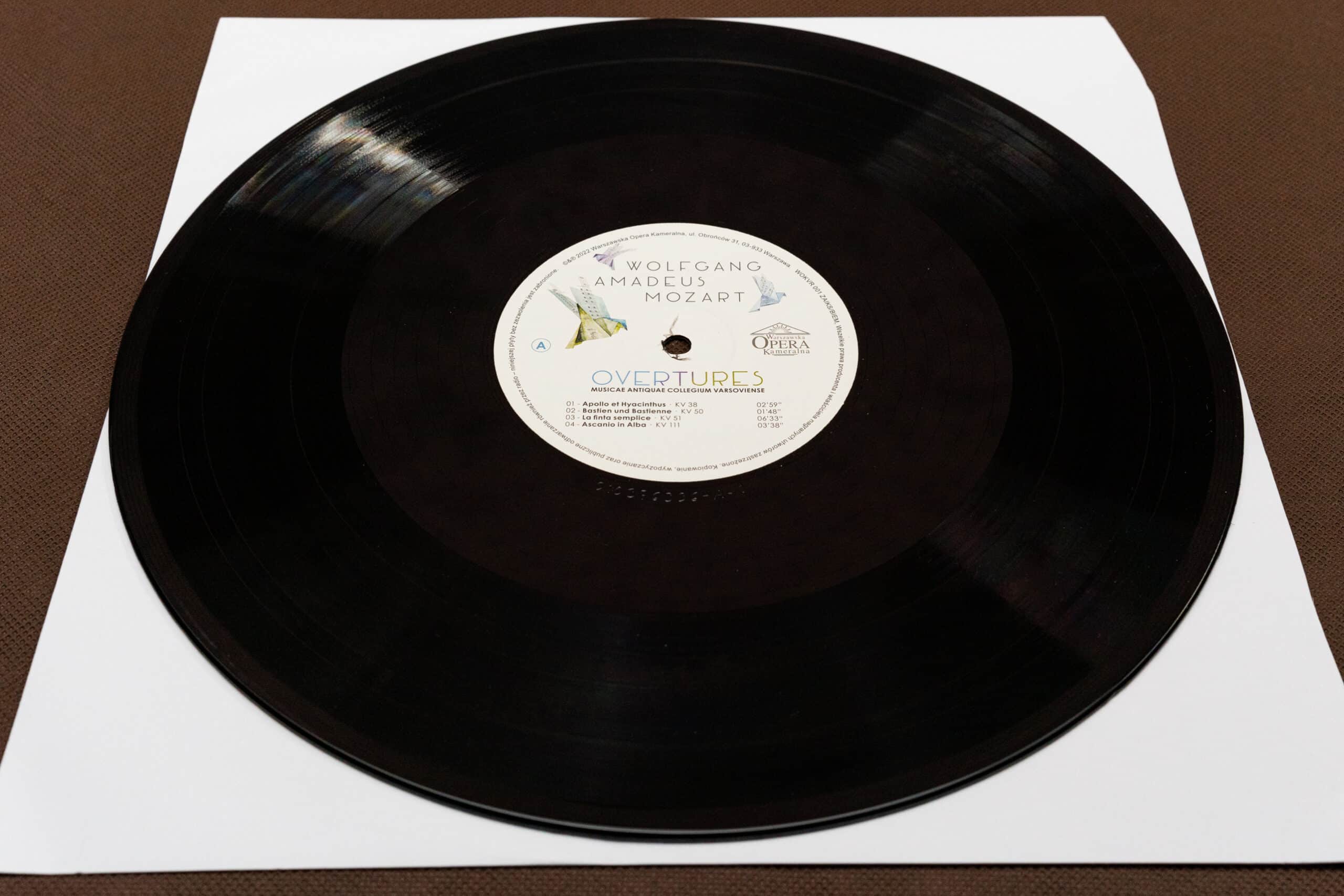„Ouvertures” Wolfgang Amadeus Mozart
CD PREMIERE: 25 IV 2022
VINYL PREMIERE:04 XI 2022
Listen to on SPOTIFY
Wolfgang Amadeus Mozart – Ouvertures
Performers:
Period Instrument Orchestra Musicae Antiquae Collegium Varsoviense
Leading from violin: Radosław Kamieniarz
Programme:
1. „Apollo et Hyacinthus” KV 38.
2. “Bastien und Bastienne” KV 50.
3. „La finta semplice” KV 51.
4. “Ascanio in Alba” KV 111.
5. „La finta giardiniera” KV 196.
6. „Idomeneo, Re di Creta” KV 366.
7. “Die Entführung aus dem Serail” KV 384.
8. „Le nozze di Figaro” KV 492.
9. „Don Giovanni” KV 527.
10. „Così fan tutte” KV 588.
11. “Die Zauberflöte” KV 620.
12. „La clemenza di Tito” KV 621.
Wolfgang Amadeus Mozart was a prodigious composer in all genres of music. Although his genius is often analysed through the prism of his symphonies, concertos or chamber music, there is no doubt that his achievements in the field of opera secured for him one of the highest, if not the most high, places in the pantheon of musical greatness. Mozart was endowed with an extraordinary sense of drama, painting his characters in a realistic, human, unique and musically characteristic way that had never been done before. Mozart’s revolutionary compositions also heavily influenced later opera composers; without them, the history of opera would doubtless be much poorer.
Mozart’s Overtures, especially in his more mature operas, bring together the most important musical elements that appear throughout the work. Often the Overture was the final part of the opera to be composed, Mozart often writing extremely quickly and with a rapidly approaching deadline; the musicians were reading the notes when the ink was barely dry on the page. Individual motifs and phrases introduce the characters and key events of the course of the ensuing drama.
The Musicae Antiquae Collegium Varsoviense (MACV) Orchestra, whose repertoire includes mainly Baroque and Classical opera titles, is uniquely positioned to convey these nuances of operatic expression. The collection of almost all the Overtures to the Salzburg maestro’s stage works, presented in chronological order, gives a unique opportunity to trace Mozart’s compositional path. It is a peculiar journey in time, during which the listener accompanies Wolfgang in the development of his creative personality – both as opera writer and symphonist – starting with “Bastien et Bastienne”, composed at the tender age of twelve, and ending with “La Clemenza di Tito”, completed just two months before the composer’s death.
In the 18th century, the issue of leadership in the orchestra was the subject of numerous debates and discussions. In some genres, preference was given to “conducting” with a rolled-up scroll of paper; in others the musical direction was entrusted to the harpsichordist who was seen as most qualified for this kind of task. However, in many leading European music centres, it was the first violinist who had the honourable and very responsible task of conducting the orchestra. This kind of leadership guaranteed the most natural and mutually inspired collaboration between the leader and the entire team. For this recording the MACV Orchestra was led from the violin by concertmaster Radosław Kamieniarz.
MACV is pleased to embrace these wonderful traditions with the album “Ouvertures”, hoping that it will contribute not only to bringing Mozart’s music to a wider audience, but also to popularise one of the most extraordinary cultural phenomena, the world of opera.
Marek Niewiedział
Benjamin Bayl

